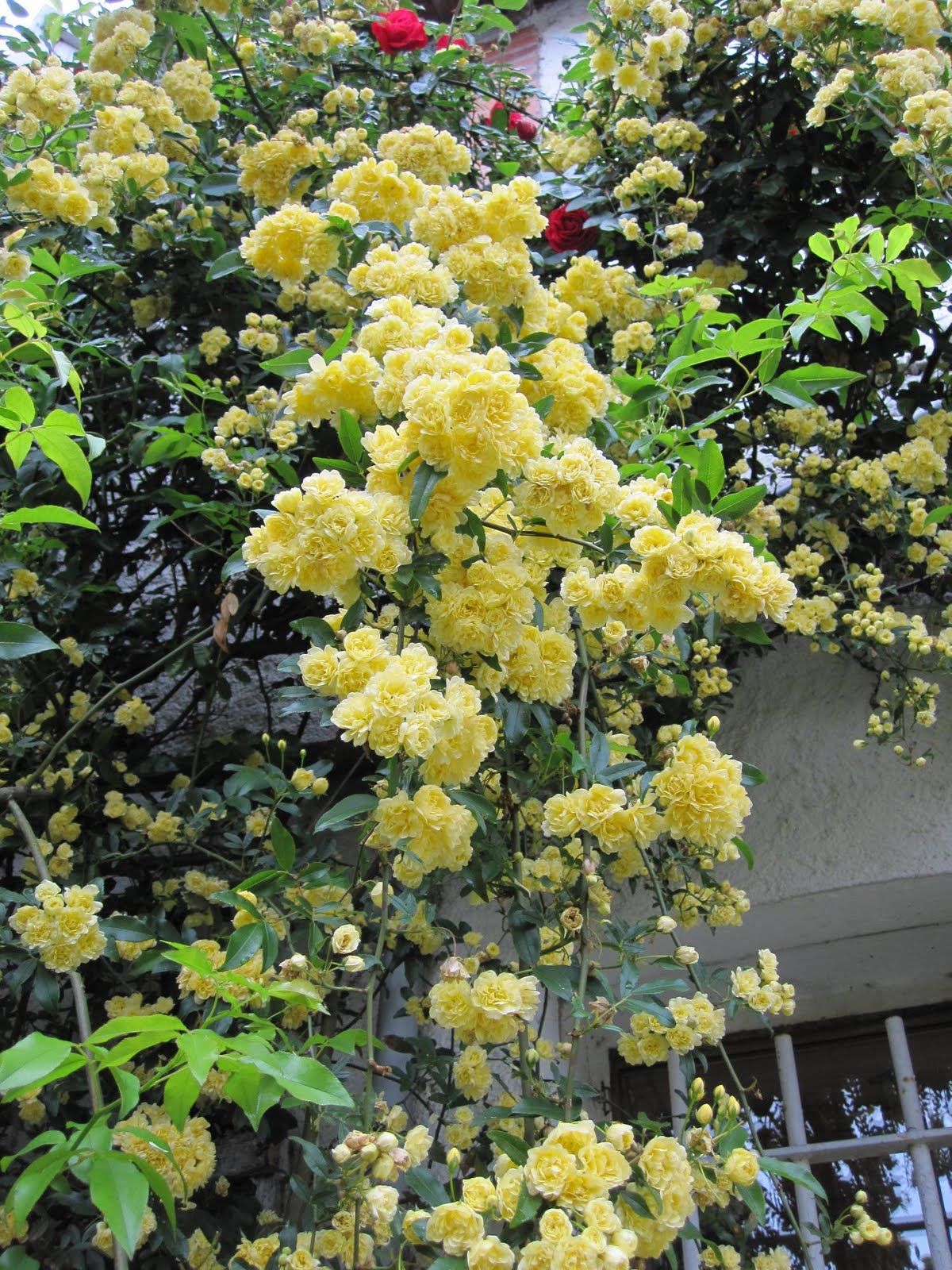ROSA banksiae rose is a garden variety of R. bankside nontuzlis.It is the true species rose. It was discovered in a Canton garden, by William Kerr. The plant has long arching thornless canes.
Main Uses of Rosa Banksiae
It was discovered in a Canton garden, by William Kerr. The plant has long arching thornless canes. Leaflets are slender. pointed. dark green, smooth and leathery, with three or five to a stem; foliage is evergreen and disease free. The sweetly scented, small white flowers appear in spring, are double and grow in clusters of three to seven flowers. It rarely bears hips.
Banksiae rose has no thorns and has a remarkable perfume.It is the most used roses by gardeners and landscapers, to decorate gardens and other spaces.They are easy-to-grow climbing plants.Keep in mind that they need supports to climb.They have rather fine stems with very few thorns . The leaves are perennial, bright, lanceolate and serrated margin. The flowers measure about 4 cm, can be white or yellow and simple or double. They bloom during the spring.
If we want to grow this species of rosebush in our garden or in a pot, we must take into account the following:
- It needs a well-drained and fertile soil. It shows preference for soils with an acid, neutral or alkaline pH. It is capable of growing in coastal areas.
- It must be placed in a place where it receives a lot of light, since it requires direct exposure to the sun. Otherwise, the plant will not grow or flourish according to its nature.
- It should be watering moderately in spring and winter. It resists drought cycles very well.
- We must protect it from frost and wind.
- It has to be fertilized with organic substances at the end of winter and with a soluble mineral fertilizer during the spring.
- The bush of this rose needs a support to be able to climb. Otherwise it would form a bush. In fact, in many gardens it is used to perform shading.
- You have to undergo pruning, although controlled and never before the plant is two years old. Pruning should always be done after flowering.
- They do not have any plague that is fattened with its specimens, although it suffers from fungi.
- To obtain specimens or reproduce them, we must use cuttings of other mature roses.
Rosa Banksiae, commonly known as Lady Banks’ rose, has various uses and features that can be summarized in a tabular format. Here’s a guide:
| Feature | Description |
|---|---|
| Botanical Name | Rosa Banksiae |
| Common Names | Lady Banks’ Rose, Banks’ Rose |
| Type | Climbing or trailing rose |
| Bloom Time | Spring |
| Flower Color | Usually white or pale yellow |
| Hardiness Zones | USDA zones 6 through 9 |
| Size | Can reach up to 15 to 20 feet in length |
| Sun Exposure | Full sun to partial shade |
| Soil Type | Well-draining soil |
| Water Needs | Moderate, more during hot seasons |
| Maintenance | Low; occasional pruning and fertilization |
| Wildlife Attraction | Attracts bees, butterflies, and other pollinators |
| Uses in Landscape | Trellises, arbors, fences, and as a ground cover |
| Special Features | Nearly thornless, strong fragrance, evergreen in warm climates |
| Potential Problems | Susceptible to powdery mildew and aphids in humid conditions |
This table provides an overview of the key characteristics and uses of Rosa Banksiae, which is admired for its beautiful blooms and versatility in garden landscapes.
Conclusion
Rosa Banksiae is an enchanting plant that offers a multitude of uses, from its stunning contributions to landscaping designs to its medicinal qualities. Whether you choose to showcase its beauty on trellises, use it as a cut flower, or incorporate its petals into herbal remedies, this remarkable plant promises to add elegance and versatility to any garden or floral arrangement. Embrace the beauty of Rosa Banksiae and unlock a world of possibilities with this breathtaking species.
